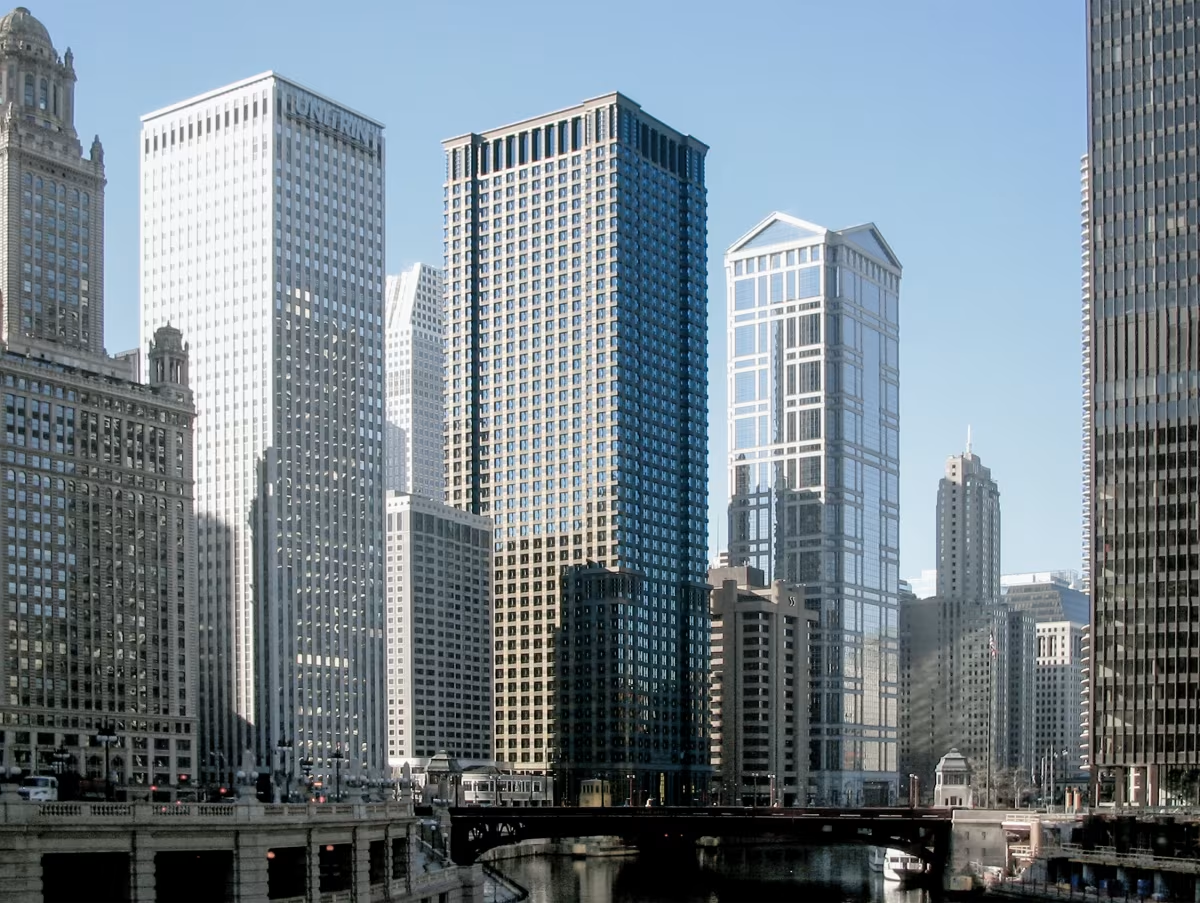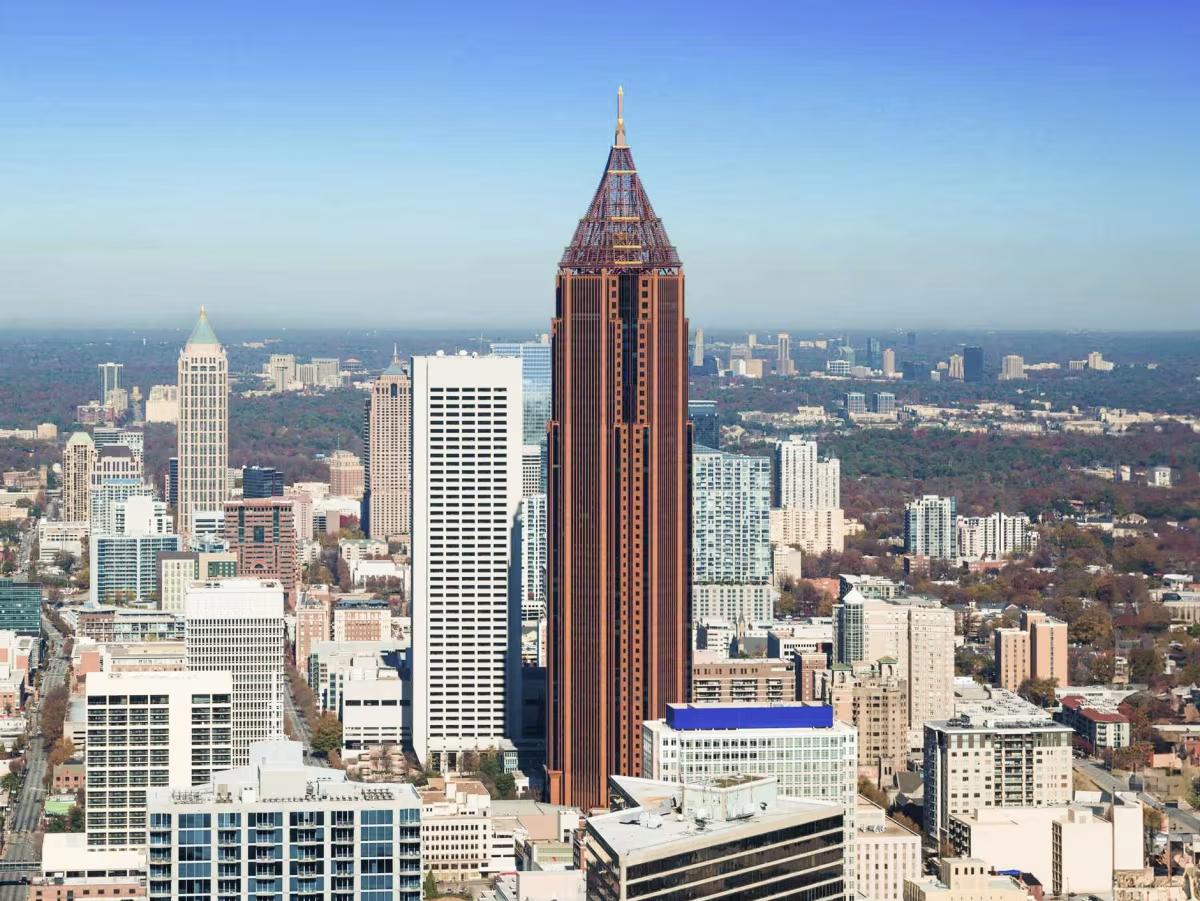Leo Burnett Building vs Bank of America Plaza


Comparing the Leo Burnett Building and the Bank of America Plaza is an interesting exercise, because even though they are located in different cities (Chicago, IL and Atlanta, GA), both were designed by Roche Dinkeloo & Associates and finished within within 3 years of each other. This gives us the chance to see how the same architect's ideas were expressed in different urban contexts almost simultaneously.
Height & Size
The Bank of America Plaza is clearly the larger tower of the two, both in terms of height and number of floors. It rises to 1024ft (312m) with 55 floors above ground, while the Leo Burnett Building reaches 636ft (194m) with 46 floors above ground.
Of course, each project may have faced different briefs or regulatory constraints, which we don't really know about and could also explain the outcome.
Architectural Style
Both the Leo Burnett Building and the Bank of America Plaza were designed in line with the aesthetic conventions of the Postmodernism style.
The Bank of America Plaza was designed at a moment when the Postmodernism style was already in decline, making it more of a lingering expression of the movement. In contrast, the Leo Burnett Building was built when the style still carried greater cultural weight.
Uses
Both the Leo Burnett Building and the Bank of America Plaza were designed to serve as commercial towers, and that has remained their main use since their completion, serving similar roles in the urban fabric.
Both towers provide significant parking capacity, with Leo Burnett Building offering 113 spaces and the Bank of America Plaza offering 1251.
Structure & Facade
Both towers share the same structural solution, a Trussed Tube In Tube system.
The trussed tube-in-tube system is a structural strategy used to carry vertical and lateral loads down to the foundations.
However, when it comes to the facade, both buildings use different approaches. The Leo Burnett Building uses a Window Wall facade, while the Bank of America Plaza uses a Curtain Wall facade.
A Window Wall facade like the one seen in the Leo Burnett Building uses panels fitted between floor slabs, leaving slab edges visible, while a curtain-wall facade like the one seen in the Bank of America Plaza uses a lightweight glass curtain wall hung from the structure.
| Leo Burnett Building | Bank of America Plaza | |
|---|---|---|
| Roche Dinkeloo & Associates | Architect | Roche Dinkeloo & Associates |
| 1986 | Construction Started | 1991 |
| 1989 | Year Completed | 1992 |
| Postmodernism | Architectural Style | Postmodernism |
| Commercial | Current Use | Commercial |
| 46 | Floors Above Ground | 55 |
| 4 | Floors Below Ground | 4 |
| 194 m | Height (m) | 312 m |
| 103,869 m² | Usable Area (m²) | 121,980 m² |
| 28 | Number of Elevators | 24 |
| Trussed Tube In Tube | Structure Type | Trussed Tube In Tube |
| A Concrete Core And Steel | Vertical Structure Material | Steel |
| Concrete And Steel | Horizontal Structure Material | Concrete And Steel |
| Yes | Facade Structural? | Yes |
| Green Granite, Glass, Steel | Main Facade Material | Granite, Glass |
| The John Buck Company | Developer | Cousins Properties |
| Cohen Barreto Marchertas | Structural Engineer | CBM Engineers Inc. |
| IL | State | GA |
| Chicago | City | Atlanta |
| 35 West Wacker Drive | Address | 600 Peachtree Street NE |